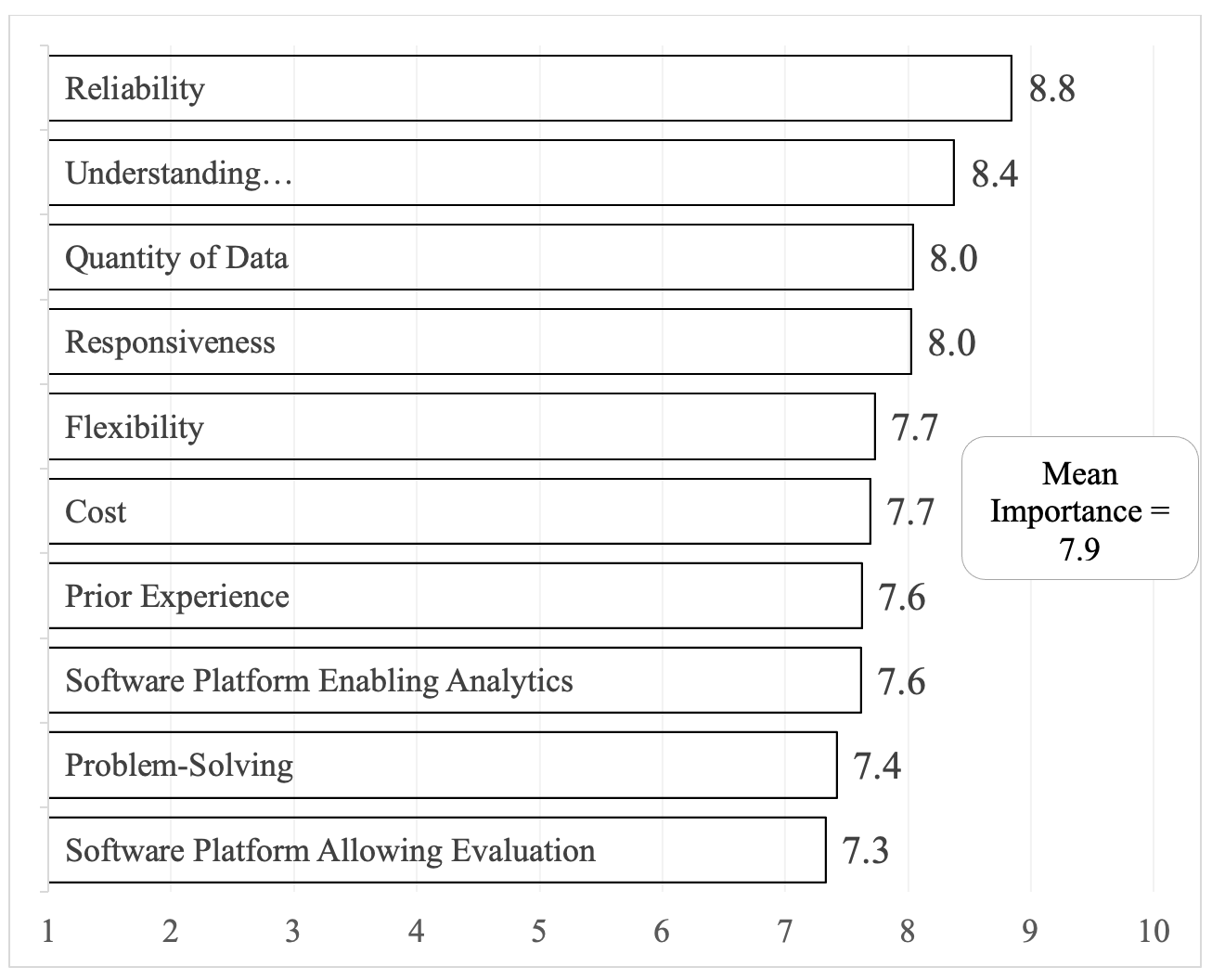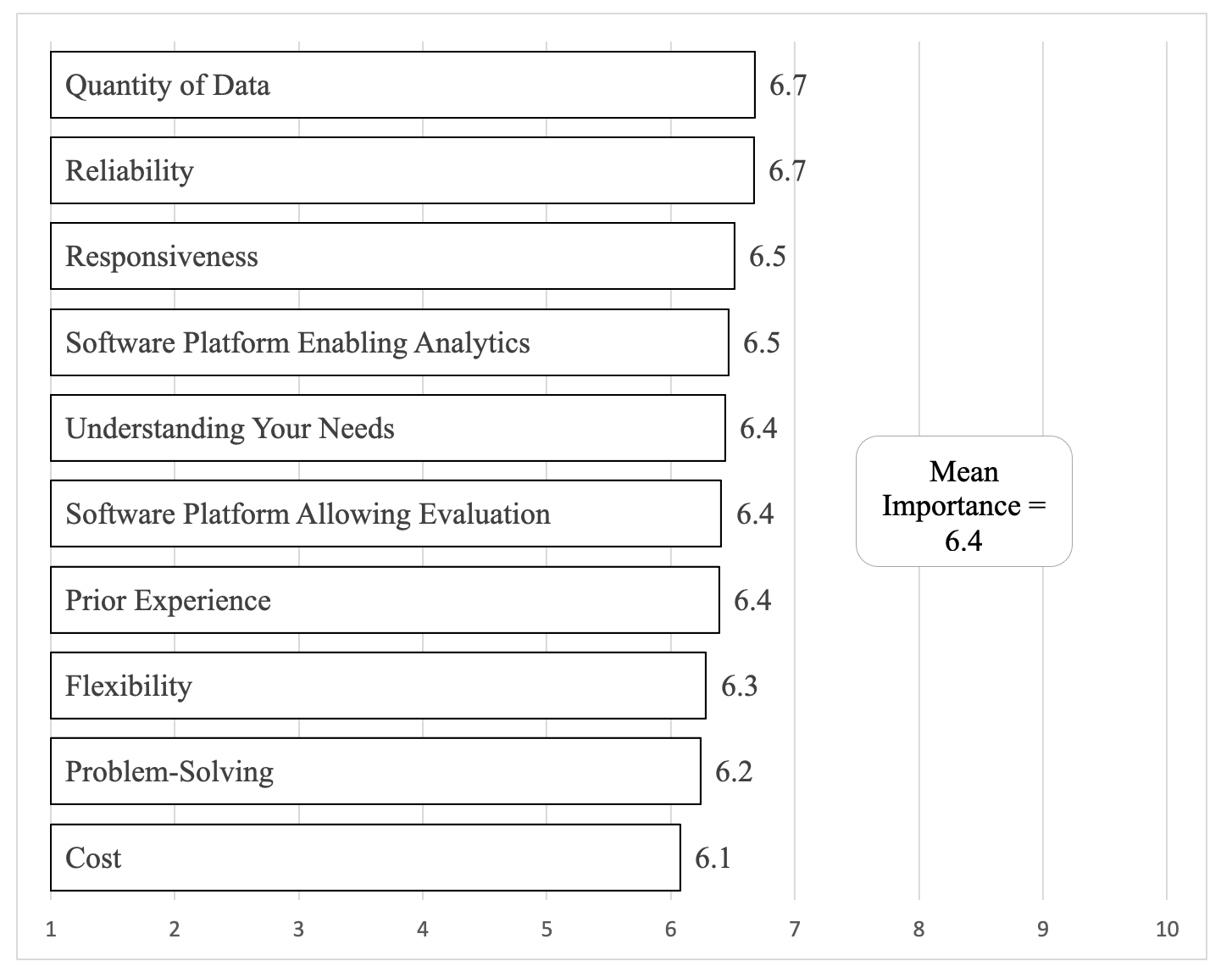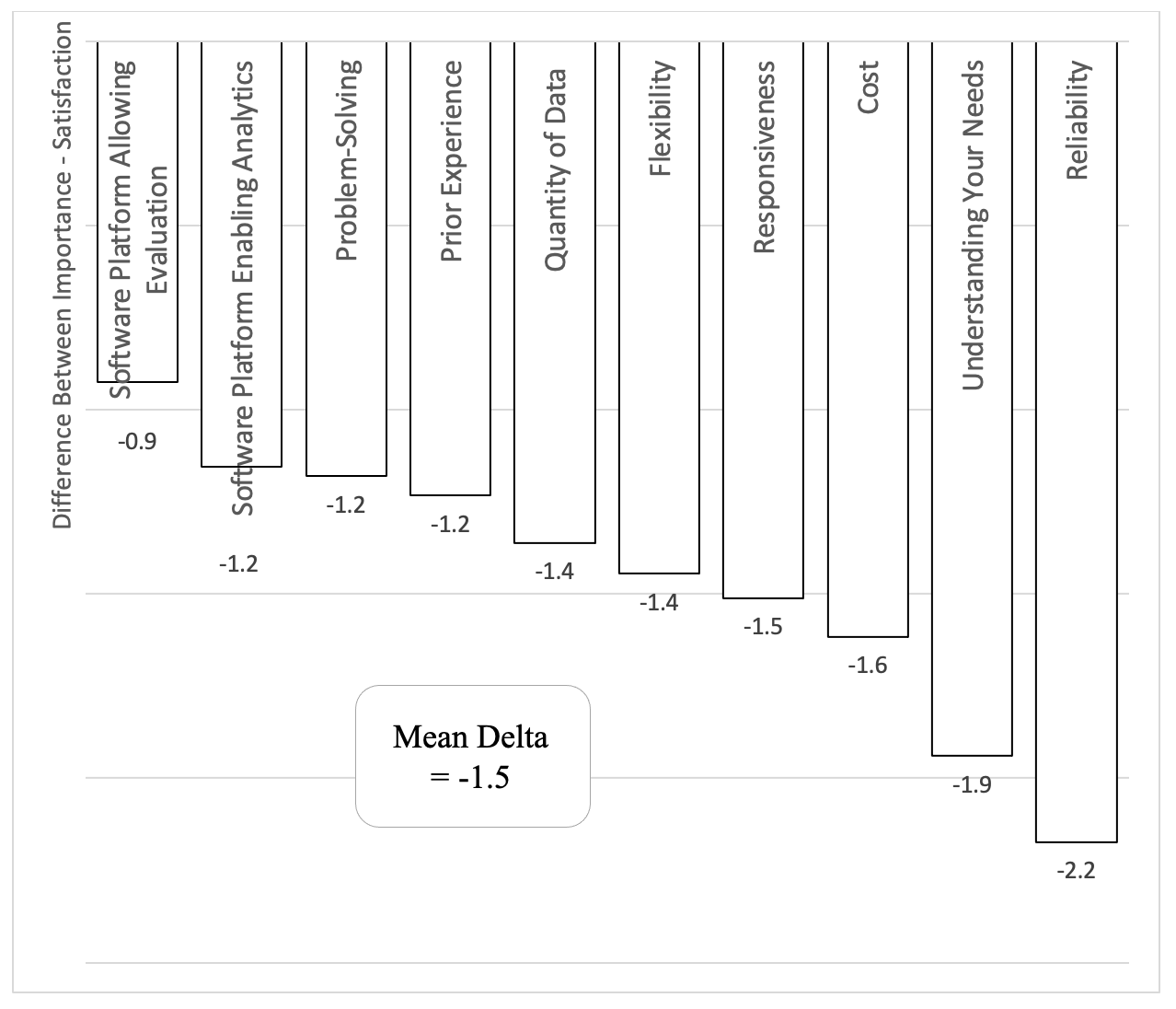Data Intermediaries/Software Can Speed the Usage of Real-World Data
Survey taken by pharma and CRO executives evaluates how effectively various programs convert RWD into usable data.
We have previously described that real-world data has mediocre usage in the clinical trials despite enthusiasm for these analytics and their performance in the COVID-19 pandemic. In this blog, we consider how the data intermediaries software affect usage of real-world data. Data by itself is not useful by itself. There has to be an ecosystem wrapped around the data to curate & protect the data and make it usable. We use the term intermediaries/software to mean the various analytic tools, vendors, and consultants this ecosystem that converts raw data into usable information.
To identify the attributes of the data that drive real-world data adoption, we surveyed 133 pharma & CRO executives. We asked them to rate the importance of various data intermediary/software attributes that are important in selecting a real-world dataset, including the ability to enable analytics and allow evaluation as well as their, cost, reliability, problem solving, flexibility, responsiveness, and understanding of needs.
We averaged across across the attributes to calculate overall importance and satisfaction, as also calculated the difference scores between importance and satisfaction in each attribute. These difference scores are important because they represent the potential growth of real-world data in the current/future usage or opportunities to grow in the gaps between importance/satisfaction.
Figure 1. Importance Ratings for Data Intermediaries/Software Attributes

The overall mean for the importance of data intermediary/softwareattributes was 7.9, which was higher than the overall mean for the actual data (μ= 7.3). Note also that there is a relatively narrow range, suggesting that it is difficult to carve out one attribute on which to focus on data intermediaries/software. Next, we consider satisfaction with the data intermediaries/software.
Figure 2. Satisfaction with Data Intermediaries/Software

You can see the satisfaction scores were lower than the importance scoressoftware.
Figure 3. The Difference Between Importance and Satisfaction for Each of the Data Intermediary/Software Attributes

The average difference between importance and satisfaction was 1.5, greater than the average difference between data importance & satisfaction. This, along with the higher importance ratings, suggests that there is a greater opportunity for growth in real-world data usage by focusing on the data intermediary/software aspects over the actual data.
For more information on RWD, view this Pharm Exec Roundtable from March 2022.
Michael Howley, PA-C, MBA, PhD & Peter Malamis, MBA